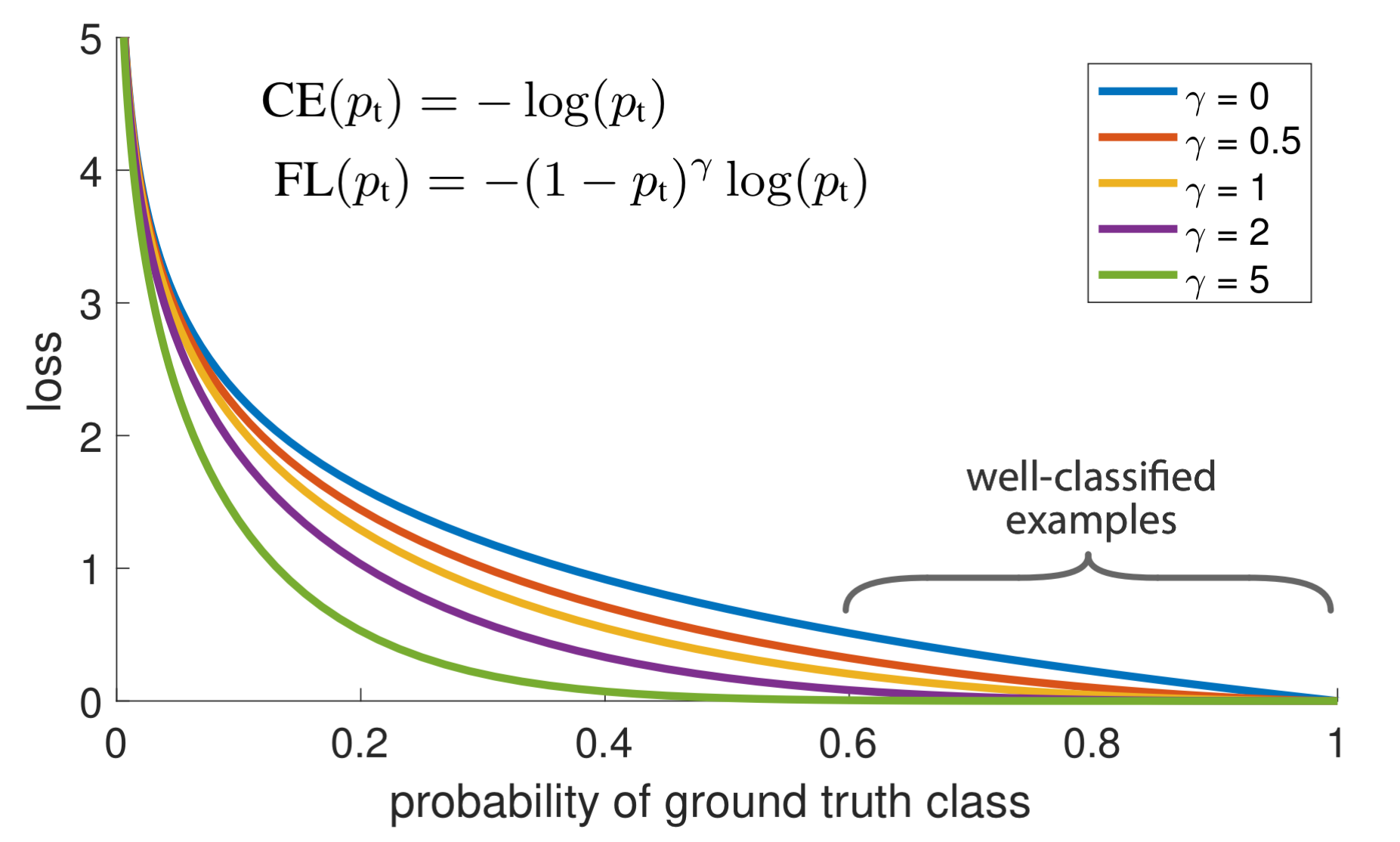Motivation
- The imbalance of foreground objects and background objects is a key problem in detection model training
- OHEM automatically select hard examples to solve this issue
- This paper proposes the Focal Loss to down-weight the loss assigned to well-classified examples, which is a dynamically scaled cross-entropy loss
Method
Binary CE Loss
Starting from the cross-entropy (CE) loss for binary classification
In the above specifies the ground-truth class and is the model's estimated probability for the class with label . For notation convenience, we define as
and rewrite
Balanced Cross Entropy
A common method for addressing class imbalance is to introduce a weighting factor for class and for class . In practice may be set by inverse class frequency or treated as a hyper-parameter to set by cross validation. For notation convenience, we define analogously to how we defined . We write the -balanced CE loss as:
Focal Loss
While balances the importance of positive/negative examples, it does not differentiate between easy/hard examples.
 Therefore, we propose to add a modulating factor to the cross entropy loss with tunable focusing parameter . We define the focal loss as
Therefore, we propose to add a modulating factor to the cross entropy loss with tunable focusing parameter . We define the focal loss as
Properties of Focal Loss
- When an example is misclassified and is small, the modulating factor is near and the loss is unaffected. As , the factor goes to and the loss for well-classified examples is down-weighted.
- The focusing parameter smoothly adjusts the rate at which easy examples are down-weighted. When , FL is equivalent to CE, and as is increased the effect of the modulating factor is likewise increased.
RetinaNet
 Combine FPN with Focal Loss
Combine FPN with Focal Loss